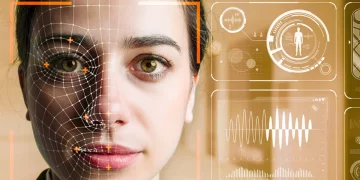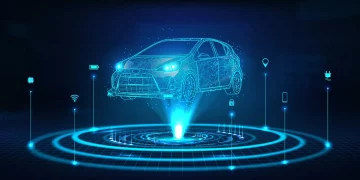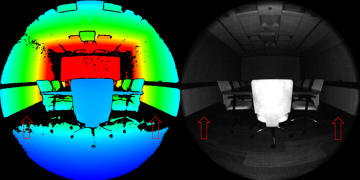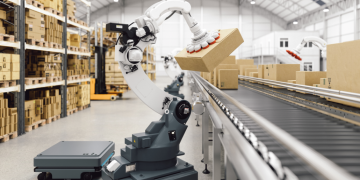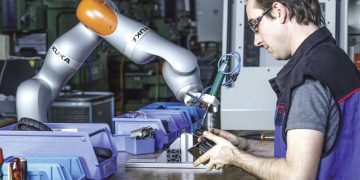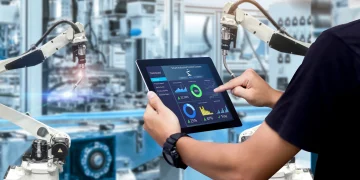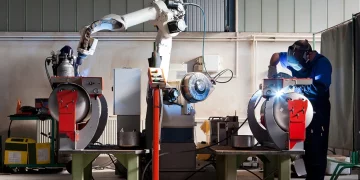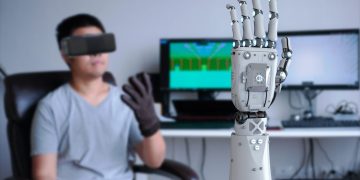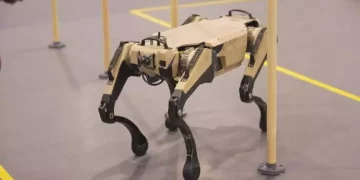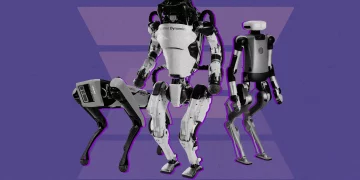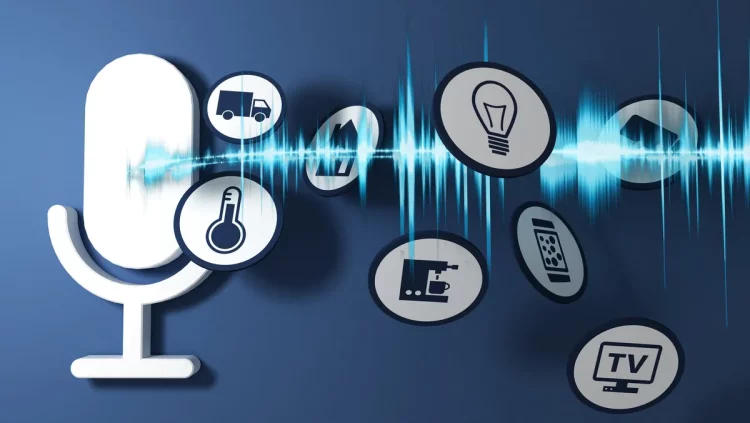Introduction
In the digital age, voice assistants have rapidly become integral to the way we interact with technology. Whether through virtual assistants like Siri, Alexa, or Google Assistant, these AI-driven systems offer users the ability to control devices, access information, and perform tasks entirely through voice commands. The advancements in speech recognition and natural language understanding (NLU) are at the core of these systems, making human-computer interactions smoother, more intuitive, and more natural than ever before.
The evolution of voice assistants represents a significant leap in human-machine interaction (HMI), allowing for interactions that were once confined to science fiction. Researchers have made significant strides in refining the accuracy of speech recognition systems and improving the ability of AI to understand and process natural language. With the increasing capabilities of deep learning, neural networks, and natural language processing, voice assistants are becoming increasingly proficient at not only understanding commands but also engaging in context-aware, conversational interactions.
This article delves into the breakthrough research that has propelled voice assistants forward, examining the key technologies involved, their applications, challenges, and the future of these AI-driven systems.
1. The Foundation of Voice Assistants: Speech Recognition and Natural Language Understanding
1.1 The Birth of Voice Assistants
Voice assistants are powered by two primary technologies: speech recognition and natural language understanding (NLU). Speech recognition allows machines to convert spoken words into text, while NLU enables the machine to comprehend and interpret the meaning behind those words. This fusion of technologies has been vital in bridging the gap between human communication and machine understanding.
Historically, speech recognition systems began with simple, isolated word recognition in the 1950s, where systems were able to recognize a limited set of commands. These early systems required users to speak in specific, structured patterns, and were limited in their functionality. However, breakthroughs in machine learning and deep learning have allowed for the development of more robust systems that can handle continuous speech, varying accents, and complex queries.
1.2 Speech Recognition: The Process of Understanding Speech
Speech recognition technology converts audio signals into a textual representation. This process involves several key stages:
- Acoustic Modeling: This refers to the process of matching the sounds produced during speech to the phonetic representations of words. The machine learns the relationship between the physical sound waves and the linguistic structure of words.
- Feature Extraction: During this step, the speech signal is broken down into smaller units, which are then analyzed for patterns. Features such as pitch, tone, and speech rhythm are critical for accurate recognition.
- Language Modeling: Once the sounds are identified, the next step is predicting the most probable word sequence, even if some words were misheard. This is crucial for handling variations in speech, such as homophones or background noise.
- Decoding: This phase involves converting the speech signal into text, often by using a combination of statistical models, neural networks, and probability-based algorithms.
1.3 Natural Language Understanding (NLU): Comprehending the Meaning
Once speech is transcribed into text, the next task for the system is to understand the meaning behind it. NLU is a subfield of Natural Language Processing (NLP) that focuses on interpreting human language in a way that allows the machine to act on it appropriately.
Key tasks in NLU include:
- Intent Recognition: Identifying the goal or purpose behind the user’s request. For instance, when a user says, “Play some music,” the system must identify the intent to play music and not something else like search for music.
- Slot Filling: Extracting relevant information (also known as “slots”) from the user’s request. For example, in the query, “Set an alarm for 7 a.m.,” the system would need to identify “7 a.m.” as the time slot for the alarm.
- Context Understanding: Understanding the context of a conversation is vital for maintaining coherent and engaging dialogues. If a user asks, “What’s the weather today?” followed by “What about tomorrow?”, the system needs to maintain context and respond about tomorrow’s weather without requiring the user to repeat their question.
2. Breakthroughs in Research: Deep Learning and Neural Networks
2.1 Deep Learning: Transforming Voice Assistants
Deep learning, a subset of machine learning, has been one of the most significant contributors to the progress of voice assistants. Deep neural networks (DNNs), particularly convolutional neural networks (CNNs) and recurrent neural networks (RNNs), have enabled voice assistants to dramatically improve in accuracy and versatility.
- Convolutional Neural Networks (CNNs): These networks are particularly good at recognizing patterns and are used in acoustic modeling to identify phonemes (distinct units of sound) from speech input.
- Recurrent Neural Networks (RNNs): RNNs excel at understanding sequences, making them particularly useful in processing speech, where context and previous words are critical to understanding meaning.
2.1.1 Transfer Learning in Speech Recognition
Transfer learning is another breakthrough technique that has played a pivotal role in improving speech recognition. By leveraging pre-trained models on vast datasets, voice assistants can fine-tune their capabilities on smaller, more specific datasets, reducing the time required for training and enhancing accuracy.
2.1.2 End-to-End Models
One of the most significant advancements in recent years has been the development of end-to-end models. Traditionally, speech recognition and NLU were treated as separate tasks, but end-to-end models attempt to integrate both tasks into a single, unified system. This simplifies the architecture and reduces the complexity of processing.

3. Applications and Impact of Voice Assistants
3.1 Revolutionizing Daily Life
The application of voice assistants has far surpassed their initial purpose of answering questions or setting reminders. Voice assistants have become integral to many aspects of daily life, including:
- Smart Homes: With devices like Amazon Echo and Google Home, voice assistants can control lights, thermostats, and other connected devices, offering a hands-free, convenient home automation experience.
- Healthcare: In healthcare, voice assistants are improving patient care by assisting with medication management, providing health information, and even helping doctors with administrative tasks. AI-powered assistants can also monitor patient conditions and alert healthcare professionals in case of emergencies.
- Business and Customer Service: Companies are integrating voice assistants into their customer service operations, offering users automated help through phone calls, chatbots, and virtual agents. These assistants can handle routine inquiries, troubleshoot problems, and even complete transactions.
- Automobiles: In cars, voice assistants allow drivers to safely access navigation, control music, make calls, and send messages without taking their hands off the wheel, enhancing both safety and convenience.
3.2 Personalization and Contextual Awareness
Advancements in contextual understanding have enabled voice assistants to offer more personalized experiences. By leveraging data, such as user preferences, past interactions, and real-time conditions, voice assistants can tailor their responses to individual needs.
For instance, voice assistants in smart devices can suggest relevant content based on the user’s previous interactions, such as recommending podcasts or adjusting smart home settings according to daily routines.
3.3 Language Diversity and Multilingual Capabilities
The globalization of technology has spurred the demand for multilingual voice assistants. Companies are working to develop systems capable of understanding and responding in multiple languages, as well as recognizing regional accents and dialects.
For example, Google Assistant supports over 30 languages and is constantly improving its understanding of diverse dialects and colloquialisms, allowing users from various regions to interact with their devices in their native languages.
4. Challenges and Future Directions
4.1 Accuracy and Speech Variability
While voice assistants have improved significantly in recognizing speech, there are still challenges in speech variability. Accents, regional dialects, background noise, and individual speech patterns can pose challenges to speech recognition systems. Continuous research is required to enhance the robustness of these systems and improve accuracy in diverse environments.
4.2 Ethical Considerations and Privacy Concerns
The integration of voice assistants into our daily lives raises ethical concerns regarding privacy and data security. Voice assistants often require constant access to microphones, which can raise fears of eavesdropping and unauthorized data collection.
- Data Protection: Stricter data protection regulations, such as GDPR (General Data Protection Regulation), are being introduced to safeguard user data and ensure that personal information is only used with explicit consent.
- Bias in Voice Recognition: Another challenge is addressing bias in voice recognition systems, which may not perform equally well across different demographics. Researchers are working to ensure that voice assistants are designed to be inclusive and fair.
4.3 The Future of Conversational AI
The future of voice assistants lies in creating even more conversational AI that can handle complex, multi-turn dialogues and understand the nuances of human communication. Future voice assistants will be capable of engaging in context-aware, emotionally intelligent conversations and provide users with more sophisticated, human-like interactions.
4.3.1 Multimodal Interaction
The future will also see the rise of multimodal interaction, where voice assistants combine voice input with other modalities like gestures, facial recognition, and touch, creating richer, more intuitive user experiences.
Conclusion
Voice assistants have come a long way from their humble beginnings, and ongoing advancements in speech recognition, natural language understanding, and AI technologies continue to push the boundaries of what is possible. Today’s voice assistants are not only more accurate and efficient but also more contextually aware and capable of engaging in natural, conversational interactions.
As research in deep learning, multilingual support, and ethical AI continues to progress, the future of voice assistants looks promising, with the potential to revolutionize industries ranging from healthcare and customer service to smart homes and beyond. By further improving the accuracy, versatility, and human-likeness of voice assistants, we are entering a new era of human-computer interaction, where technology becomes increasingly intuitive, empathetic, and seamless.






